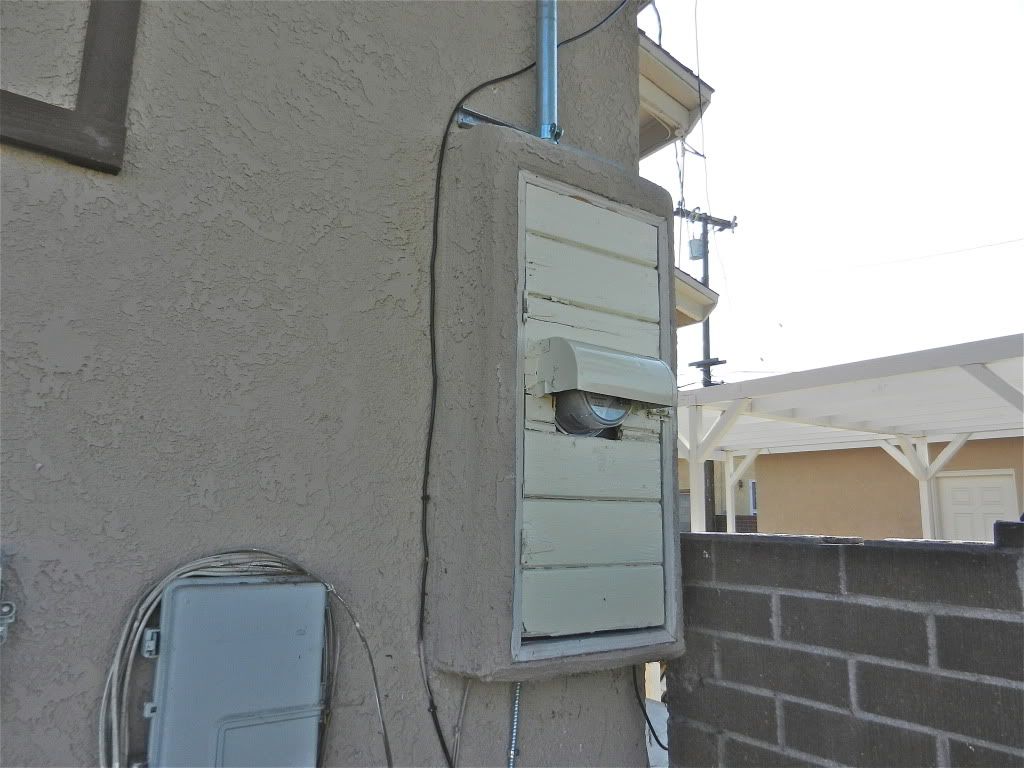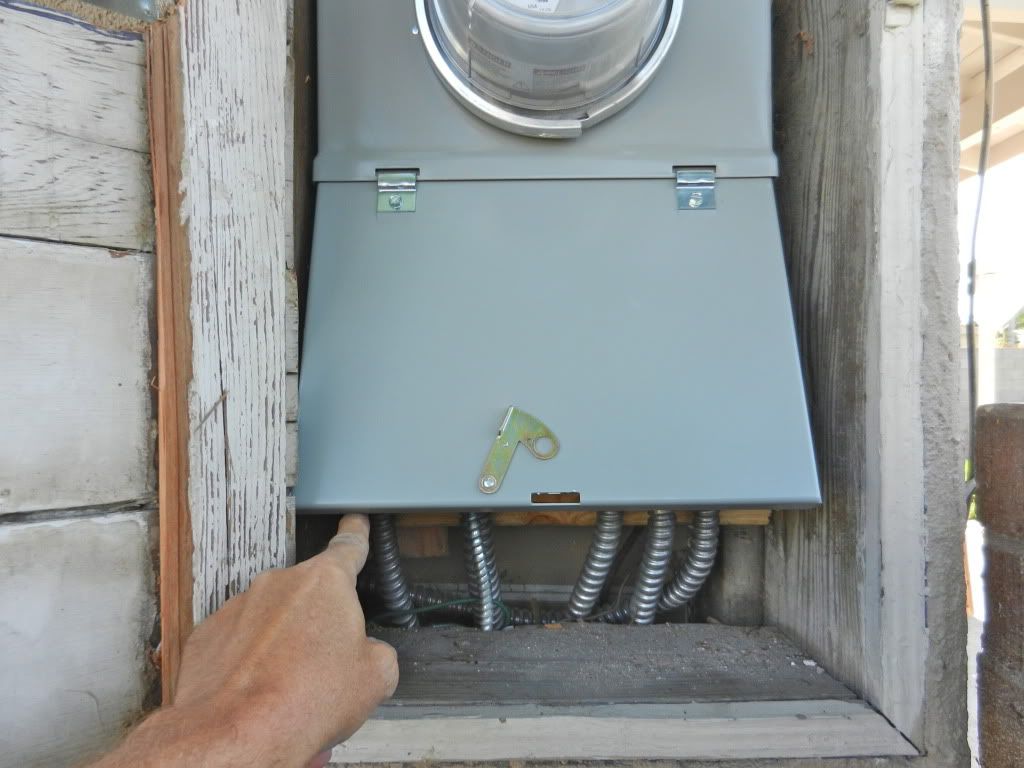jar546
Forum Coordinator
Why is this never done right 70-80% of the time?



Got a code section that states working space clearance is not required for a non-fused disconnect?ICE said:It could be just a disconnect without over-current protectives installed. No working space required.
I can't help you with that.raider1 said:Got a code section that states working space clearance is not required for a non-fused disconnect?Chris


I'll start the drubbing.ICE said:The code says likely to require service. A disconnect doesn't require servicing. Fuses and circuit breakers do require service. A attachment plug can serve as a disconnect and working space is not required. I have been down this road at other forums and most likely will take a drubbing again but that's the rule here.
IMO any disco is very likely to require examination. (inspection for internal damage and voltage or amperage testing)110.26 Spaces About Electrical Equipment.Sufficient access and working space shall be provided and maintained about all electrical equipment to permit ready and safe operation and maintenance of such equipment.
(A) Working Space. Working space for equipment operating at 600 volts, nominal, or less to ground and likely to require examination, adjustment, servicing, or maintenance while energized shall comply with the dimensions of 110.26(A)(1), (A)(2), and (A)(3) or as required or permitted elsewhere in this Code.
There is no examination, adjustment, servicing or maintenance of a disconnect while energized that is likely to be required. E,A,S and M performed on the disconnect does not require that the disconnect be energized. E,A,S and M may be taking place on the condenser but that doesn't create a working space requirement for the disconnect. Sticking test probes inside a disconnect is not E,A,S and M of the disconnect.chris kennedy said:I'll start the drubbing.IMO any disco is very likely to require examination. (inspection for internal damage and voltage or amperage testing)
And well played sir!...We require it here.....luckily for me...but I can see the other side of that one....ICE said:Ya I've heard that before. There is no examination, adjustment, servicing or maintenance of a disconnect while energized that is likely to be required. E,A,S and M performed on the disconnect does not require that the disconnect be energized. E,A,S and M may be taking place on the condenser but that doesn't transfer a requirement for working space to the disconnect. Sticking test probes inside a disconnect is not E,A,S and M of the disconnect.Bear in mind that I am playing the hand that I've been dealt.
IAEI, just like UL, doesn't enforce the code.Kevin Turner said:I think raider 1 and chris have drove the nail home. Ice if you can have a worm fuzzy with your interpretation roll with it, however you can get a the real one from IAEI. Just sayin'
IMO, a reasoned approach based on common sense. I can see why you've been drubbed by those who approach things differently.ICE said:The code says likely to require service. A disconnect doesn't require servicing. Fuses and circuit breakers do require service. An attachment plug, pull out or switch can serve as a disconnect and working space is not required.
You are absolutely incorrect about that. Testing for voltage is considered examination and can only be done while the disconnect is energized therefore requiring the working space. Testing for voltage is one of the few times that you can work on energized equipment in accordance with OSHA and NFPA 70E standards.ICE said:Sticking test probes inside a disconnect is not E,A,S and M of the disconnect.
So how do you mount an undersink disposal, again?raider1 said:You are absolutely incorrect about that. Testing for voltage is considered examination and can only be done while the disconnect is energized therefore requiring the working space. Testing for voltage is one of the few times that you can work on energized equipment in accordance with OSHA and NFPA 70E standards. When an HVAC teck or and electrician is called out to service the A/C condenser and checks for voltage the likely location to test for the presents of voltage is the disconnecting means for the A/C condenser. Chris
Is it practical to provide working space for A/C disconnects?brudgers said:So how do you mount an undersink disposal, again?
So you’re saying that if there are conditions that would make it impractical to have working space clearance for an AC disconnect; then it’s ok to ignore the rule.raider1 said:Is it practical to provide working space for A/C disconnects?It is not practical to require working space for a receptacle installed under a sink.
Therein lies the difference in the 2 situations IMHO.
Chris
The rule in 110.26(A) is very vague as to what equipment requires working space. For example the receptacle under the sink would not be a practical application on 110.26(A).gbhammer said:So you’re saying that if there are conditions that would make it impractical to have working space clearance for an AC disconnect; then it’s ok to ignore the rule.Me thinks that the tiger is winning.
:cheers
It's best to sneak up on them.brudgers said:So how do you mount an undersink disposal, again?
